Subscriber Benefit
As a subscriber you can listen to articles at work, in the car, or while you work out. Subscribe NowConner Prairie’s plan to expand west across the White River into Carmel represents the Fishers-based living history museum’s biggest and boldest move since it separated from Earlham College in 2005.
But receiving approval for the project—which focuses on food, farming and the environment—will be a complicated process that will need to come together quickly under a tight deadline. The Carmel City Council will examine the benefits of the project for the larger Carmel community and consider nearby residents’ worries about the impact of the expansion on their neighborhood.
Councilor Sue Finkam, who represents Northeast District neighbors who live across River Road from the proposed expansion, told IBJ she has questions she plans to raise once the project is introduced, likely at the city council’s Aug. 21 meeting.
“I want to drill down on traffic counts and the utilization of each of the buildings proposed,” Finkam said.
The city council is required by state law to vote on the expansion by its Oct. 16 meeting in order to meet a 90-day certification requirement after the city’s plan commission issued a favorable recommendation on July 25. The plan commission’s action happened about 10 months after the project was introduced.
Should the city council make any changes to the current expansion plan, the project would return to the plan commission. The project would take effect 90 days after the date of certification from the plan commission if the city council took no action.
Opportunities for discussion between now and October will be scarce. After the Aug. 21 meeting, only one city council meeting is scheduled in September, while Finkam said meetings in October are traditionally focused on the city budget.
Finkam is running for mayor against fellow councilor Democrat Miles Nelson.
Conner Prairie seeks to rezone 260 acres of land it owns west of the White River, south of East 146th Street and east of River Road. The museum’s plans, if the rezoning request is approved, could take 20 years to reach completion, although some work would happen more quickly.
“These are major, major new projects that I think really help create a national stature for Conner Prairie,” Conner Prairie Foundation Chair Chris Cooke said.
The museum is planning two new sections that would use land Conner Prairie has left largely untouched for decades.
The proposed Food, Farm & Energy Experience District would start just south of East 146th Street. It would include a 70-room eco-lodge and cabins, multiple buildings and exhibits, a restaurant, a historic farm and a modern farm, a solar field, trails, woodland, prairie, wetlands, a pedestrian bridge and parking. Visitors to the Food, Farm & Energy Experience District would need a ticket.
“We’ve got this opportunity to teach our community about where food comes from and how we achieve breakthroughs and new things with our food,” Cooke said.
The Land, Water & Energy Innovation District would be south of the food, farm and energy section. It would include the White River Education & Ecology Center, an innovation center with up to 110,000 square feet of office space, a farm-to-table restaurant, commercial buildings and a trail.
“What a wonderful thing today in an era where we’re talking about green energy and we’re talking about clean water and we’re talking about our food and things,” Cooke said, “and here we are talking about how to make the White River as clean and as productive as it can be.”
The current plan is smaller than one presented last October. The project’s footprint was reduced from 35% to 15% of the museum’s 260 acres of vacant land. Planners also agreed to decrease the size of the eco-lodge from 140 rooms to 70 and to create larger setbacks for buildings away from River Road.
The eco-lodge and cabins would be farther from Prairie Trace Elementary School than originally planned, and a southern entrance to the development was removed from the plan.
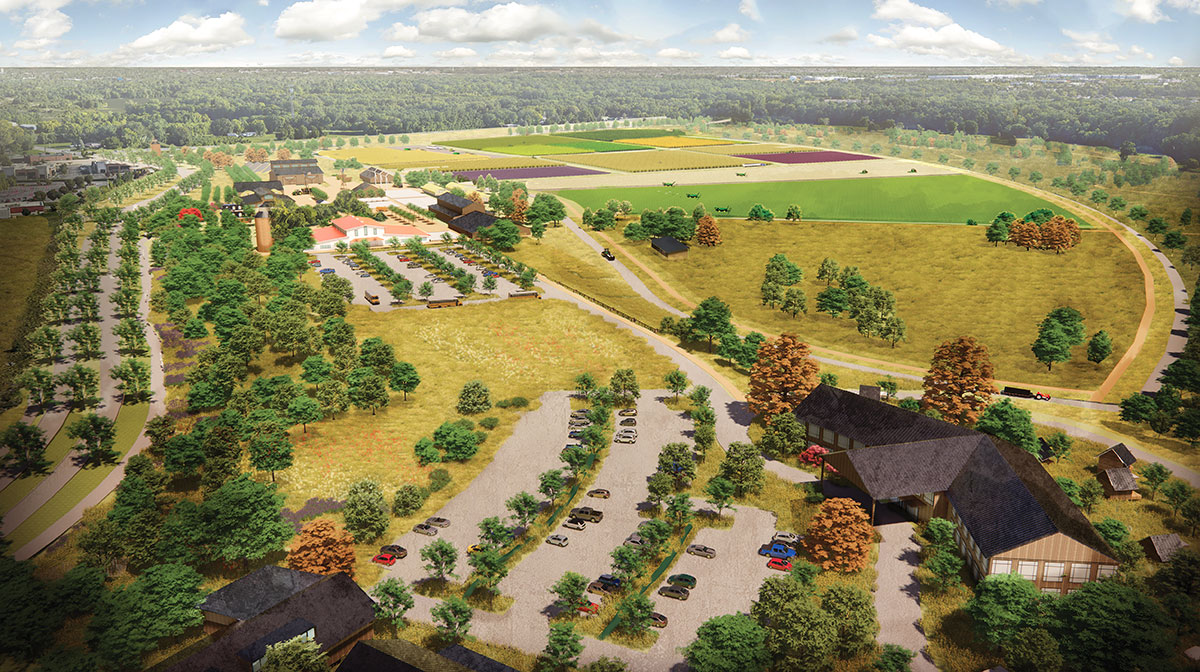
Neighbors worry
Despite the changes, people who live across River Road from the proposed expansion still have concerns.
Jim Roehrdanz, president of The Overlook at Legacy Homeowners Association, said residents recognize that Conner Prairie’s expansion project will likely be approved.
But Roehrdanz and his neighbors, who are concerned about the impact of lighting and noise, would like to see a buffer installed on the west side of River Road. The Overlook at Legacy is a 31-home subdivision along River Road.
“Our main concern here is, how do we isolate our adjacent neighborhood from this development?” Roehrdanz said. “We go from viewing forested areas, wooded areas, to potentially viewing a multiple-story office building, asphalt parking lots and lighting that inevitably goes along with that.”
He said the natural beauty of the riverbank is a primary reason people choose to live at The Overlook at Legacy.
“This is probably one of the last natural areas of Carmel and certainly the last on the northeast corner of Carmel,” Roehrdanz said. “It presents the potential to drastically change the appearance of the White River shoreline along the west side.”
Finkam said she shares residents’ concerns about noise, activity and traffic. She said primary objections focus on the size of the 70-room eco-lodge and the three-story, 110,000-square-foot innovation center planned near the White River.
Weekend events, public address systems, trolleys and music are topics Finkam wants to discuss.
“I want commitments the council will have a say in anything as far as architecture and design, which usually is reserved for the plan commission, but I want to make sure council has a say in that,” she said.
Staying relevant
Cooke said he hopes Carmel’s leaders and residents recognize Conner Prairie’s expansion as a “wonderful opportunity.”
He emphasized that River Road would not look like Allisonville Road in Fishers after Symphony on the Prairie.
“It’s going to elevate both Conner Prairie and Carmel’s stature, and we’ve got to work on this,” he said.
Hamilton County Tourism CEO Brenda Myers said the White River Education & Ecology Center could play an important role in fulfilling the objective of the White River Vision Plan. Community leaders unveiled the vision plan in 2019 to detail how a 58-mile stretch of the waterway could be preserved and developed through Marion and Hamilton counties.
Nelson, the Democratic mayoral candidate, said the incorporation of the White River is one of the things that excites him about the project.
“That’s going to benefit so many people,” he added.
Myers also sees the possibility that agriculture-themed conferences could be lured to the Land, Water & Energy Innovation District. In total, the expansion plans amount to making Conner Prairie more than a place where people go to learn about the past.
“It’s not just Conner Prairie putting in another historic area,” Myers said. “It’s trying to tie it to what’s relevant today.”
Conner Prairie attracted 347,254 visitors in 2022, an increase from the pandemic-era lows of 133,572 in 2020 and 282,227 in 2021. The museum drew an all-time high of 428,600 in 2017.
Museum officials do not currently have an estimate for how many visitors the expansion would add.
Conner Prairie opened in the 1930s as Conner Prairie Farms, after Eli Lilly bought the property and restored the William Conner house. Over the next decade, Lilly moved several historic structures to the site, and the land was a working farm for years. He transferred the property to a charitable trust in 1964 and named Earlham College as trustee. Conner Prairie Pioneer Village (later renamed Prairietown)—which features the loom house, trading post and other structures Lilly had moved onto the property—opened in 1974.
In the 18 years since the split with Earlham, Conner Prairie has grown from primarily the site of the 1836 Prairietown attraction and 1816 Lenape Indian Camp to encompass multiple outdoor and indoor experiences, including 1859 Balloon Voyage and 1863 Civil War Journey. Its most ambitious recent project—Promised Land as Proving Ground, which examines nearly 1,000 years of Black history—is partially open. Two of its three buildings are still under construction.
Conner Prairie became a Smithsonian Affiliate in 2008, making it part of a network of museums with reciprocal membership agreements.
With the expansion, Cooke said, Conner Prairie now has an opportunity to become a nationally recognized museum.
“We really didn’t start to become today’s Conner Prairie until 2007 or 2008, when we really got our feet under us,” Cooke said. “So this is a baby museum compared to most of the other institutions around the city.”•
Please enable JavaScript to view this content.

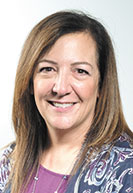
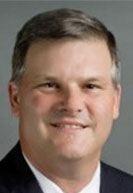
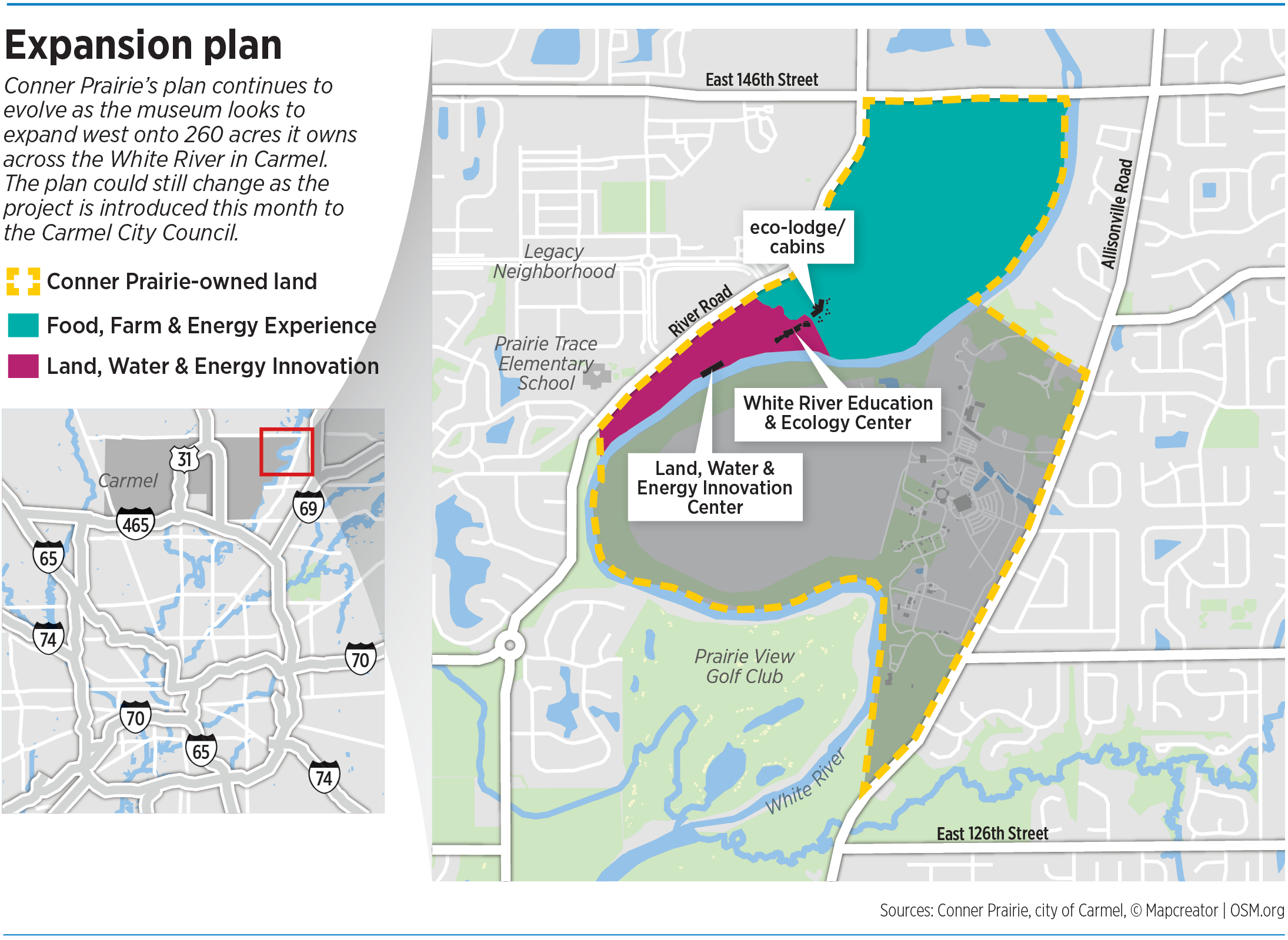
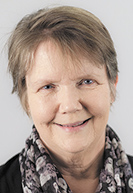
This final project should end up being a great addition to Carmel.
Residents complaining about a development while they live in a house that was once developed on the same type of land. NIMBY
To add to that, the forested area they enjoy is not theirs. Move to the country if you want your own open field.
“We go from viewing forested areas, wooded areas, to potentially viewing a multiple-story office building, asphalt parking lots and lighting that inevitably goes along with that.”
Pretty much, nevermind that CP owned that land long before the housing development went in. It’s pretty amusing they want a seat at the table to dictate how the land will be used now.